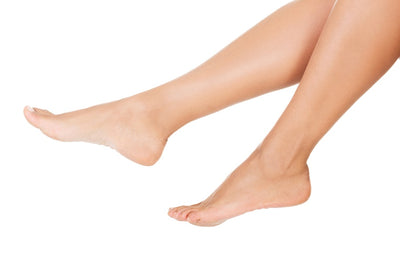
Breaking Health News About Achilles Tendinitis
Debra Murray
Achilles tendinitis is an injury resulting from overusing the tendon, which is the band of tissue connecting the calf muscles running along the back part of the lower leg to that of the heel bone. It commonly occurs in those who are runners that have suddenly increased the duration or intensity of their runs. It’s also increased in those who are middle-aged individuals who play in sports, such as basketball or tennis.
Most cases of Achilles tendinitis are easily treated with simple, at-home care. Self-care strategies are imperative at preventing any recurring episodes of the condition. Some of the more serious cases of the condition can end up leading to tears in the tendon that might have to be surgically repaired.
The condition is often caused from intense or repeated strain on the Achilles tendon. This tendon is used whenever you run, walk, push or jump on your toes. The structure of the tendon tends to grow weaker as you age, which makes it more prone to injuries, especially in those who might only participate in sports on the weekends, or those that have suddenly increased their running programs’ intensity.
Numerous factors tend to increase the likelihood of you ending up with Achilles tendinitis:
- Age and Sex – Achilles tendinitis frequently occurs in middle-aged men.
- Physical Problems – Naturally flat arches in the foot can place additional strain on the tendon. Tight calf muscles and obesity tend to increase strain in the tendon.
- Training Choices – Running in shoes that are worn out can increase your risk of developing the condition. Tendon pain will often occur more often in cold weather than it will in warmer weather. Running on hilly terrain also leaves you prone to the condition.
- Medical Conditions – For those who have high blood pressure or diabetes, the chance of developing the condition are elevated.
- Medications – Certain forms of antibiotics are associated with an elevated rate of developing the condition.
Even though it might not always be possible to prevent the condition from occurring in the first place, you can take the necessary precautions to minimize your risk.
- Increase activity gradually. If you are just getting into an exercise regimen, you want to start off slowly and increase the intensity and duration gradually.
- Take things easy. Avoid any activities that place an undue amount of stress on your tendons. If you are participating in an activity that requires a great deal of exertion, warm up first by exercising slowly. If you are in pain during a specific exercise, you need to stop and rest.
- Choose the type of shoes you wear accordingly. The shoes worn while exercising should provide you with ample cushioning for your heel. A firm arch support is needed to help minimize the tension in your tendon. Replace any shoes that are worn out. If the shoes are in great condition, but they don’t support your feet, you might want to try arch supports.
Using Foot and Leg Comfort Cream with emu oil will help to improve circulation and revitalize your tired feet and legs. An additional benefit to the blend is that it helps to reduce swelling and moisturize feet, cracked heels and legs deeply.
Even though it might not always be possible to prevent the condition from occurring in the first place, you can take the necessary precautions to minimize your risk.


 {{/image.src}}
{{/image.src}}





